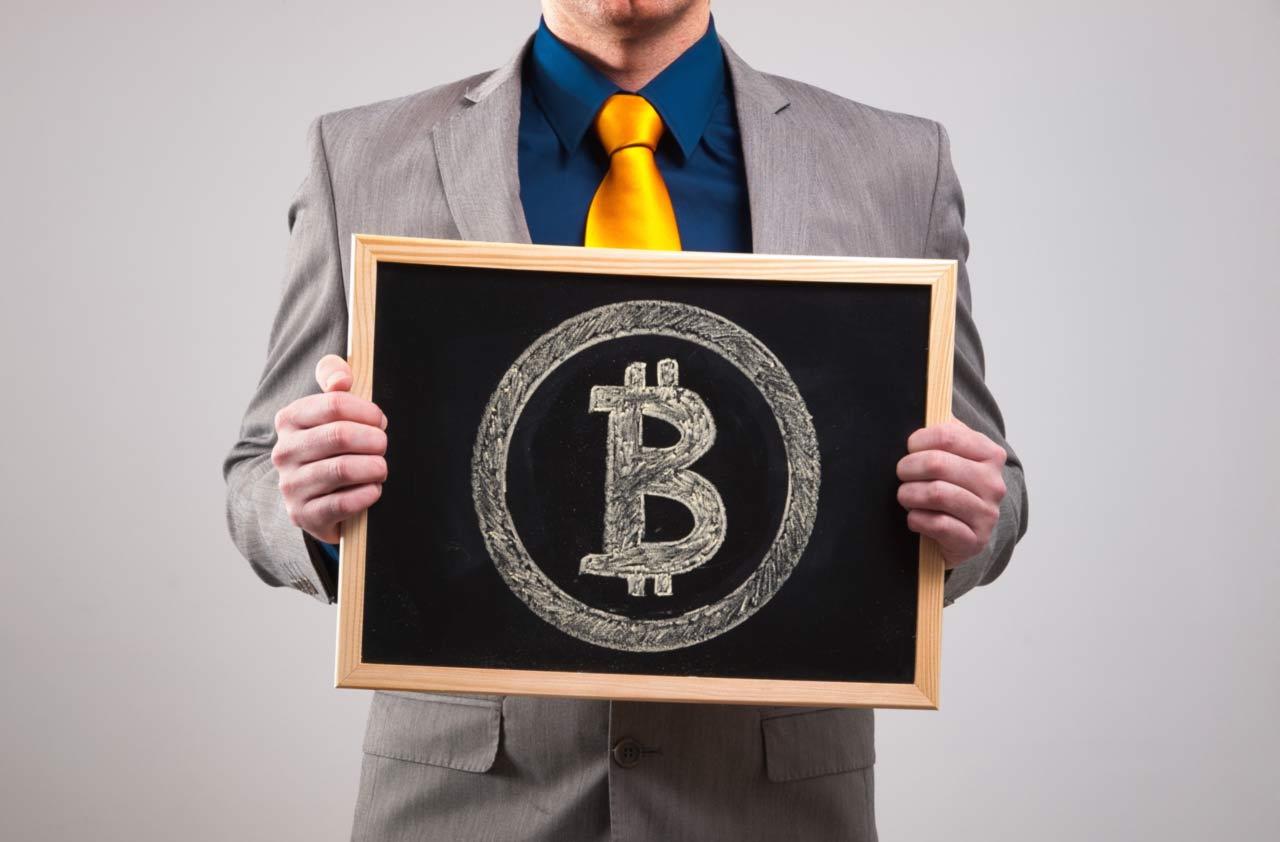The Bitcoin IRA: 5 Essential Facts You Need to Know
When you think IRA investments, you're probably not thinking bitcoin. With a self-directed IRA, investing in the skyrocketing currency could be an option. But should you go for it?


You can’t escape the hype. It seems that everywhere you turn, people are talking about bitcoin. But few people understand what bitcoin is and how it works.
Bitcoin is a peer-to-peer system where transactions typically take place directly between users. It works without a single or central administrator, unlike the U.S. dollar, which is produced and managed entirely by the U.S. Treasury and the Federal Reserve. Bitcoins can be exchanged for services, products and various currencies. As we have seen in recent years, the currency can also be used for investment purposes.
One method of investing in bitcoin that has been increasing in popularity is the use of an individual retirement account (IRA). Is this legal? How is the account established?
From just $107.88 $24.99 for Kiplinger Personal Finance
Be a smarter, better informed investor.

Sign up for Kiplinger’s Free Newsletters
Profit and prosper with the best of expert advice on investing, taxes, retirement, personal finance and more - straight to your e-mail.
Profit and prosper with the best of expert advice - straight to your e-mail.
Investments made using traditional IRAs are typically handled solely by the financial institution with which the IRA is established. The self-directed IRA (SDIRA), however, allows investors to purchase any asset permitted by law. It is capable of holding both conventional assets (stocks and bonds) and alternatives, such as gold and bitcoin.
That said, there is technically no such thing as a bitcoin IRA. There is only the SDIRA that can be used for investing in the so-called cryptocurrency. If you’re considering this option, here are some essential facts to consider.
1. The Self-Directed IRA landscape is evolving.
SDIRAs are flexible, allowing for diverse investments. As many investors are getting bored with traditional investments, such as stocks and mutual funds, more investment variety is being introduced to the market. This evolution of the SDIRA landscape includes the introduction and growing popularity of the idea of investing in bitcoin.
2. Bitcoin has increased in value.
Bitcoin valuations have skyrocketed. The usage of bitcoin has grown, as well, with over 100,000 vendors currently accepting bitcoins as a form of payment. Since a single bitcoin has gone from being valued at 8 cents in 2010 to well over $6,000 today, it makes sense that it is being used more and more as a form of investment. But beware, as a correction could come at any time.
3. The viability of bitcoin IRA investments is questionable.
While it is known that bitcoin values have increased beyond any early predictions, it is unknown how much longer these increases will continue. In fact, should you be looking to invest your IRA in bitcoin, it would be wise to keep it a very small amount of your entire portfolio. It is still very speculative. Make sure to consult with your financial adviser on your portfolio allocation.
4. The legality of bitcoin is currently being debated worldwide.
Some countries, such as Australia and Canada, explicitly permit bitcoins and bitcoin transactions, while others, including Iceland, have strictly prohibited the cryptocurrency. China has allowed the holding and trading of bitcoins but banned the participation of its financial institutions in these activities. Some countries, such as Australia and Canada, explicitly permit bitcoins and bitcoin transactions, while others, have strictly prohibited the cryptocurrency. China has recently banned bitcoin trading, which forced many bitcoin operators to shut down or move their servers offshore.
Bitcoin has been permitted in the United States. However, debate is ongoing, such as whether or not any restrictions should be placed on the cryptocurrency. The IRS in 2014 published guidance stating that it “does not approve IRA investments,” but the agency doesn’t explicitly prohibit them either, which brings us to our next fact.
5. The IRS does not prohibit IRA investments into Bitcoins.
Regarding legality in the United States, investors can find comfort in the lack of specific legal restrictions. Currently, the Internal Revenue Service only prohibits IRA investments in life insurance and collectibles such as stamps, artwork, metals, coins, etc. This stipulation means that you are technically allowed to use your SDIRA to invest in bitcoin, as it is not specifically named in either of the prohibited investment categories.
The legality, stability and investment potential of bitcoin have all been intensely debated — often without clear answers or solutions. In the end, it is up to you to decide what to invest in using your SDIRA.
If you plan to invest in bitcoin using an SDIRA, make sure you do so through a self-directed custodian that does not restrict your investments solely to cryptocurrencies. This way, you can use your SDIRA to act on any significant investment that comes your way.
But be cautious. Bitcoin is very speculative and only should be invested in with careful consideration.
Profit and prosper with the best of Kiplinger's advice on investing, taxes, retirement, personal finance and much more. Delivered daily. Enter your email in the box and click Sign Me Up.

Paul Sundin is a CPA and tax strategist. With a worldwide client base, he specializes in tax planning and tax structuring for individuals, entrepreneurs and the real estate industry. In addition to being a CPA, he is also an author, speaker and consultant. His professional mission is to educate taxpayers on tax strategies and personal finance.
-
 Seven Surprising Reasons Retirees Are Going Back to Work
Seven Surprising Reasons Retirees Are Going Back to WorkSure, money is a big reason to come out of retirement, but it's not the only reason retirees are doing it.
-
 Dow Gains 617 Points as Rate Cuts Near: Stock Market Today
Dow Gains 617 Points as Rate Cuts Near: Stock Market TodayWednesday's economic data didn't shift Wall Street's expectations that the Fed is preparing for a rate cut at next week's meeting.
-
 Four Clever and Tax-Efficient Ways to Ditch Concentrated Stock Holdings, From a Financial Planner
Four Clever and Tax-Efficient Ways to Ditch Concentrated Stock Holdings, From a Financial PlannerHolding too much of one company's stock can put your financial future at risk. Here are four ways you can strategically unwind such positions without triggering a massive tax bill.
-
 Beyond Banking: How Credit Unions Serve Their Communities
Beyond Banking: How Credit Unions Serve Their CommunitiesCredit unions differentiate themselves from traditional banks by operating as member-owned financial cooperatives focused on community support and service rather than shareholder profit.
-
 Answers to Every Early Retiree's Questions This Year, From a Wealth Adviser
Answers to Every Early Retiree's Questions This Year, From a Wealth AdviserFrom how to retire in a crazy market to how much to withdraw and how to spend without feeling guilty, a financial pro shares the advice he's given this year.
-
 The Risks of Forced DST-to-UPREIT Conversions, From a Real Estate Expert
The Risks of Forced DST-to-UPREIT Conversions, From a Real Estate ExpertSome new Delaware statutory trust offerings are forcing investors into 721 UPREIT conversions at the end of the hold period, raising concerns about loss of control, limited liquidity, opaque valuations and unexpected tax liabilities.
-
 I'm a Financial Adviser: You've Built Your Wealth, Now Make Sure Your Family Keeps It
I'm a Financial Adviser: You've Built Your Wealth, Now Make Sure Your Family Keeps ItThe Great Wealth Transfer is well underway, yet too many families aren't ready. Here's how to bridge the generation gap that could threaten your legacy.
-
 Want to Advance on the Job? Showing Some Courtesy and Appreciation Could Help
Want to Advance on the Job? Showing Some Courtesy and Appreciation Could HelpTwo business professors share their insights about the impact of digital communication on the social skills of some in Gen Z and the importance of good manners on the job.
-
 From Job Loss to Free Agent: A Financial Professional's Transition Playbook (and Pep Talk)
From Job Loss to Free Agent: A Financial Professional's Transition Playbook (and Pep Talk)The American workforce is in transition, and if you're among those affected, take heart. You have the skills, experience and smarts that companies need.
-
 A Financial Planner's Top Five Items to Prioritize When Your Spouse Is Ill
A Financial Planner's Top Five Items to Prioritize When Your Spouse Is IllDuring tough times, it's easy to overlook important financial details, but you'll be so much better off if you take care of these things right now.